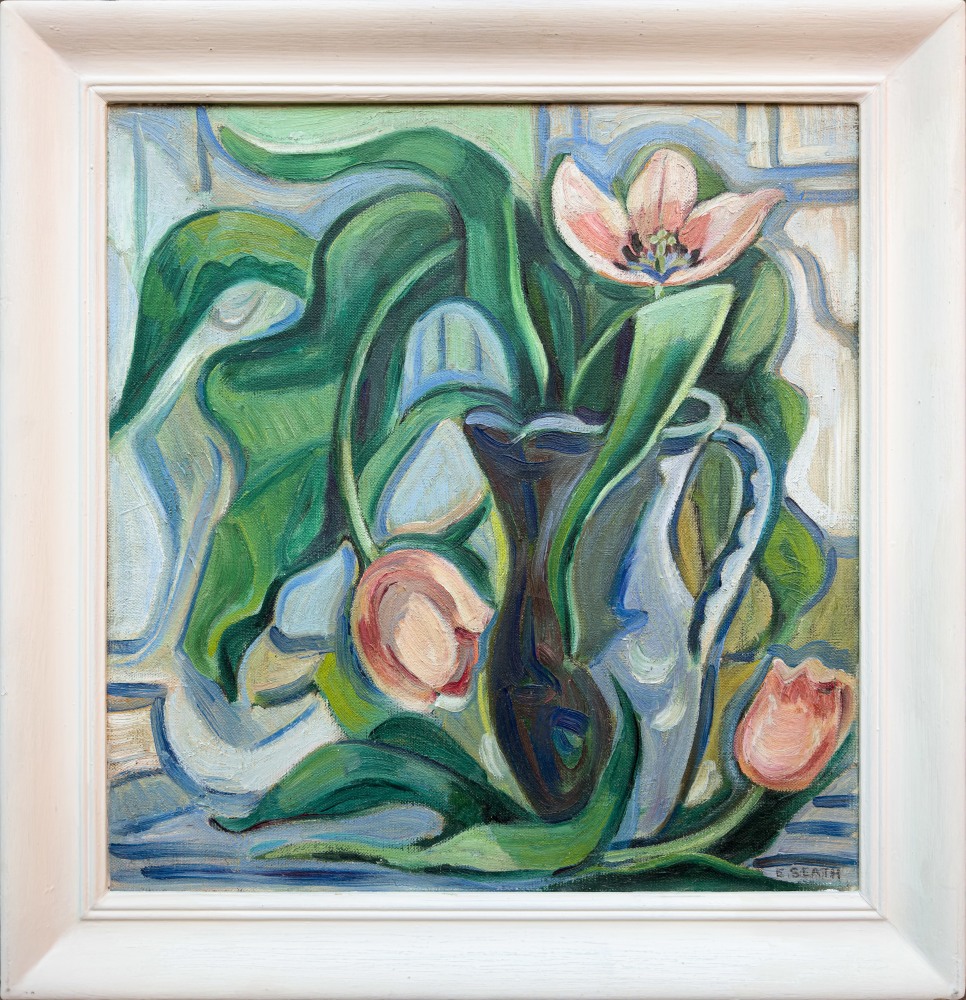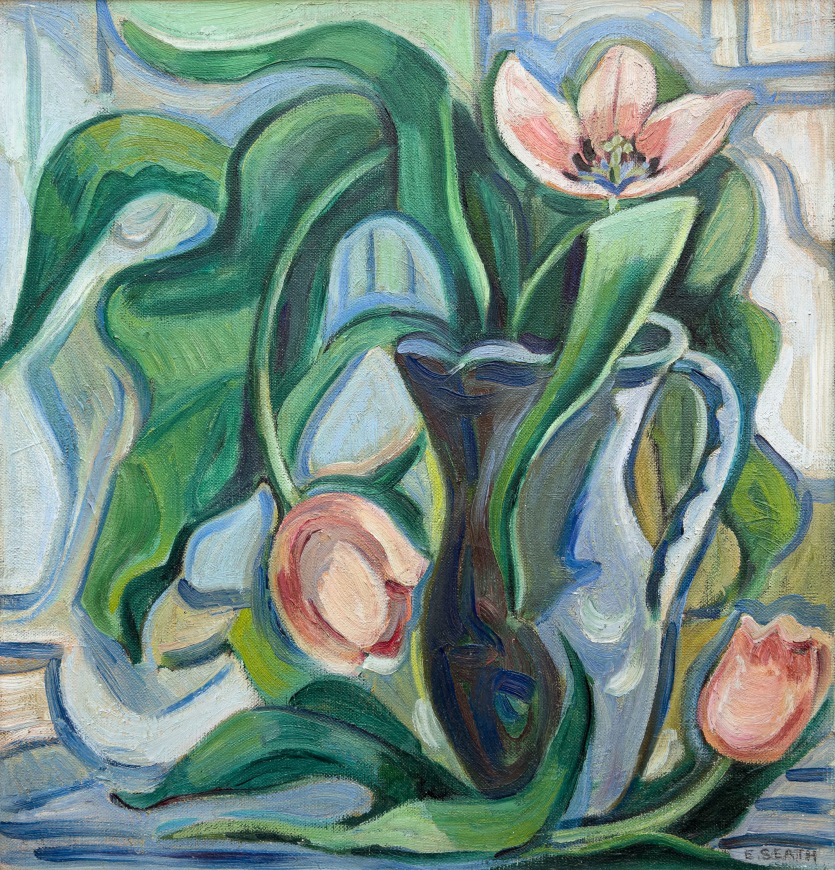-
Artworks
Ethel SeathTulip Pattern, 19501879-1963Oil on canvas20 x 16 in
50.8 x 40.6 cmSoldInscriptions
signed 'E. SEATH' (lower left); titled, signed, inscribed and priced 'Tulip Pattern / Ethel Seath/ 361 Melville Ave Westmount/ Price $50.00' (verso, artist's label)Provenance
Private collection, Westmount, Quebec
By descent to the present private collection, TorontoExhibitions
Montreal, Montreal Museum of Fine Arts, Group show of women painters: Collyer, Hampson, Lockerby, Morris, Savage and Seath, 3-24 May 1950.
Hamilton, Art Gallery of Hamilton, Third Annual Winter Exhibition, December 1950.
Montreal, Galerie Walter Klinkhoff Inc., Ethel Seath (1879-1963) Retrospective Exhibition, September 1987, no. 36.
Literature
“Paintings by Women At Fine Arts Museum: Kathleen Morris, Ethel Seath, Anne Savage, Nora Collyer Among Exhibitors,” The Gazette (Montreal), 6 May 1950, 22In writing for Galerie Walter Klinkhoff’s Ethel Seath Retrospective Exhibition Catalogue, Roger Little noted that from an early age, the titles of Ethel Seath’s artwork suggested, “an attraction to nature as well as to homespun domesticity...The curvilinear patterns which would often characterize Ethel’s work, the bold colours and the occasionally abstracted naivete of her eye - all were evidence of a tenacious yet quiet independence.” [1]
This statement could easily describe Tulip Pattern, 1950. It's a canvas that reveals Seath to be a superior painter, fluid and confident, and modern in her approach. With its reference to Pattern, the title, applied by Seath on her artist label, is a direct indication that she had no intention of painting a plain still life. She uses lines and values (with a limited palette) to create a harmonious and beautiful composition.
Ethel Seath was a successful and highly trained commercial artist. She began her instruction in the 1890s at the Conseil des Arts et Manufactures under the tutelage of Robert Harris and Edmond Dyonnet. In 1896, she secured a position as a newspaper illustrator at the Montreal Witness. Later she worked at the Montreal Star. She was an exception in what was a male dominated field. Her success afforded Seath the opportunity to take art classes with William Brymner at the Art Association of Montreal, and she also joined Maurice Cullen’s plein air sketching classes in the Quebec countryside.
Through the classes at the Art Association, Seath became associated with the Beaver Hall Group artists. She exhibited at the famous British Empire Exhibition at Wembley, London, in 1925 and her work was regularly featured in the Annual Spring Exhibitions at the Art Association of Montreal. She was a member of the Canadian Group of Painters and the Contemporary Arts Society.
Seath’s success is not a banal story of overcoming traditional challenges. Her father was an unsuccessful businessman and chronically ill. When she was a teenager her parents separated and Seath helped her mother raise her four siblings. She secured her position at the Montreal Witness at the age of 17, to help support her family.
While at the peak of her creative painting abilities, Seath’s time was also occupied by her teaching responsibilities, both at The Study, a prestigious girls school, and later at the Art Association.
______________________
Footnote:
[1] Galerie Walter Klinkhoff Inc., Ethel Seath (1879-1963) Retrospective Exhibition (Montreal: Galerie Walter Klinkhoff Inc., 1987), unpaginated.













